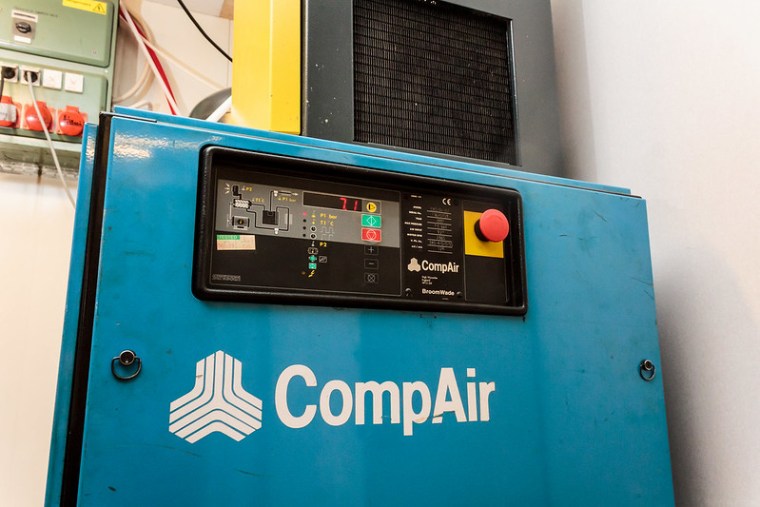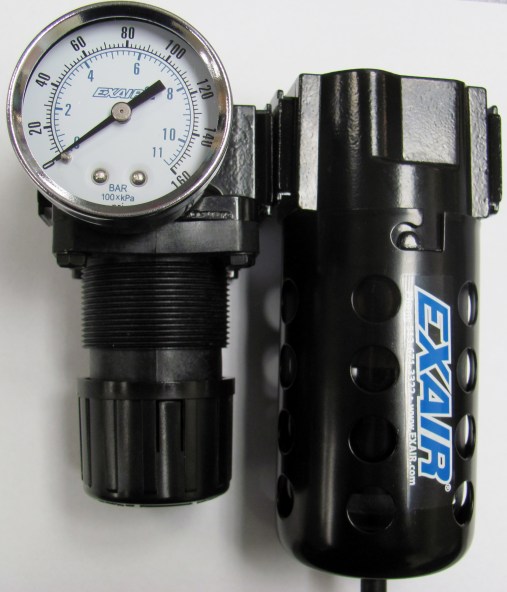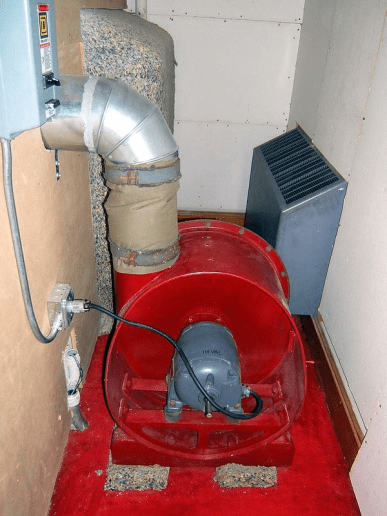
In any manufacturing environment, compressed air is critical to the operation of many processes. You will often hear compressed air referred to as a “4th utility” in a manufacturing environment. The makeup of a compressed air system is usually divided into two primary parts: the supply side and the demand side. The supply side consists of components before and including the pressure/flow controller. The demand side then consists of all the components after the pressure/flow controller.
The first primary component in the system is the air compressor itself. There are two main categories of air compressors: positive-displacement and dynamic. In a positive-displacement type, a given quantity of air is trapped in a compression chamber. The volume of which it occupies is mechanically reduced (squished), causing a corresponding rise in pressure. In a dynamic compressor, velocity energy is imparted to continuously flowing air by a means of impellers rotating at a very high speed. The velocity energy is then converted into pressure energy.
Still on the supply side, but installed after the compressor, are after coolers, and compressed air dryers. An after cooler is designed to cool the air down upon exiting from the compressor. During the compression, heat is generated that carries into the air supply. An after cooler uses a fan to blow ambient air across coils to lower the compressed air temperature.
When air leaves the after cooler, it is typically saturated since atmospheric air contains moisture. In higher temperatures, the air is capable of holding even more moisture. When this air is then cooled, it can no longer contain all of that moisture and is lost as condensation. The temperature at which the moisture can no longer be held is referred to as the dewpoint. Dryers are installed in the system to remove unwanted moisture from the air supply. Types of dryers available include: refrigerant dryers, desiccant dryers, and membrane dryers.
Also downstream of the compressor are filters used to remove particulate, condensate, and lubricant. Desiccant and deliquescent-type dryers require a pre-filter to protect the drying media from contamination that can quickly render it useless. A refrigerant-type dryer may not require a filter before/after, but any processes or components downstream can be impacted by contaminants in the compressed air system.
Moving on to the demand side, we have the distribution system made up of a network of compressed air piping, receiver tanks when necessary, and point of use filters/regulators. Compressed air piping is commonly available as schedule 40 steel pipe, copper pipe, and aluminum pipe. Some composite plastics are available as well, however PVC should NEVER be used for compressed air as some lubricants present in the air can act as a solvent and degrade the pipe over time.

Receiver tanks are installed in the distribution system to provide a source of compressed air close to the point of use, rather than relying on the output of the compressor. The receiver tank acts as a “battery” for the system, storing compressed air energy to be used in periods of peak demand. This helps to maintain a stable compressed air pressure. It improves the overall performance of the system and helps to prevent pressure drop.
Finally, we move on to the point-of-use. While particulate and oil removal filters may be installed at the compressor output, it is still often required to install secondary filtration immediately at the point-of-use to remove any residual debris, particulate, and oil. Receiver tanks and old piping are both notorious for delivering contaminants downstream, after the initial filters.

In any application necessitating the use of compressed air, pressure should be controlled to minimize the air consumption at the point of use. Pressure regulators are available to control the air pressure within the system and throttle the appropriate supply of air to any pneumatic device. While one advantage of a pressure regulator is certainly maintaining consistent pressure to your compressed air devices, using them to minimize your pressure can result in dramatic savings to your costs of compressed air. As pressure and flow are directly related, lowering the pressure supplied results in less compressed air usage.
EXAIR manufactures a wide variety of products utilizing this compressed air to help you with your process problems. If you’d like to discuss your compressed air system, or have an application that necessitates an Intelligent Compressed Air Product, give us a call.
Tyler Daniel, CCASS

Application Engineer
E-mail: TylerDaniel@EXAIR.com
Twitter: @EXAIR_TD
Compressor Image courtesy of Tampere Hacklab via Creative Commons License